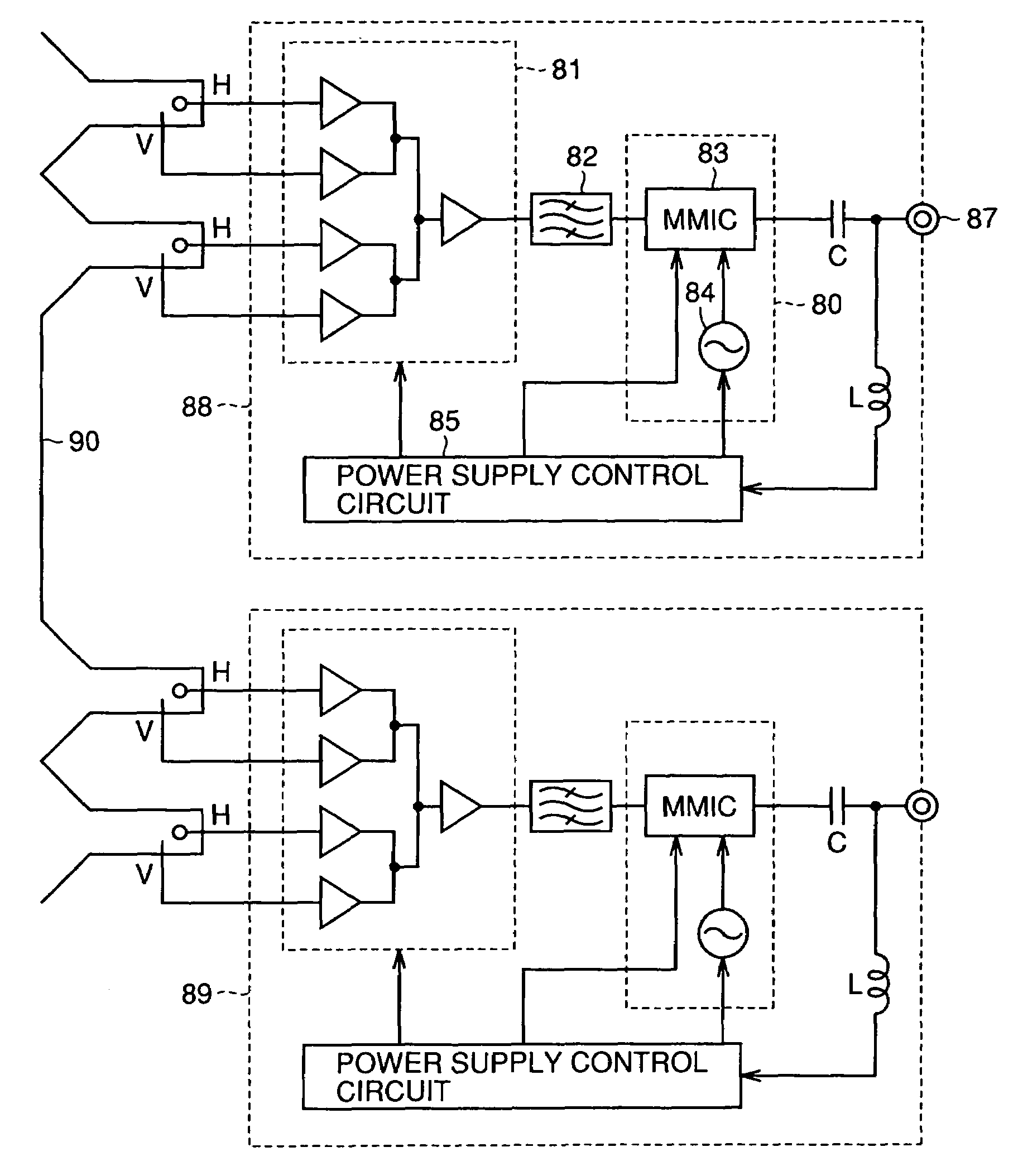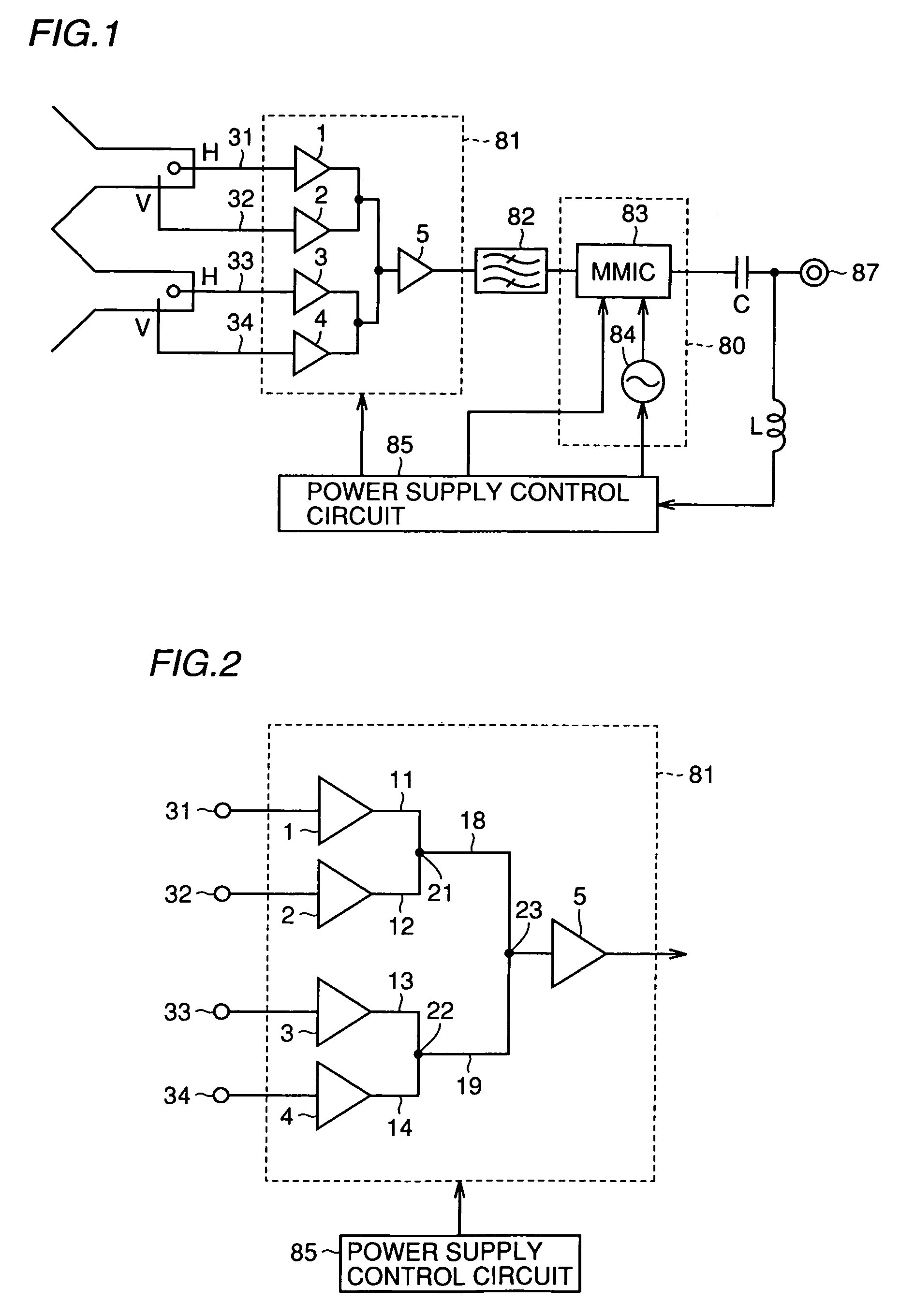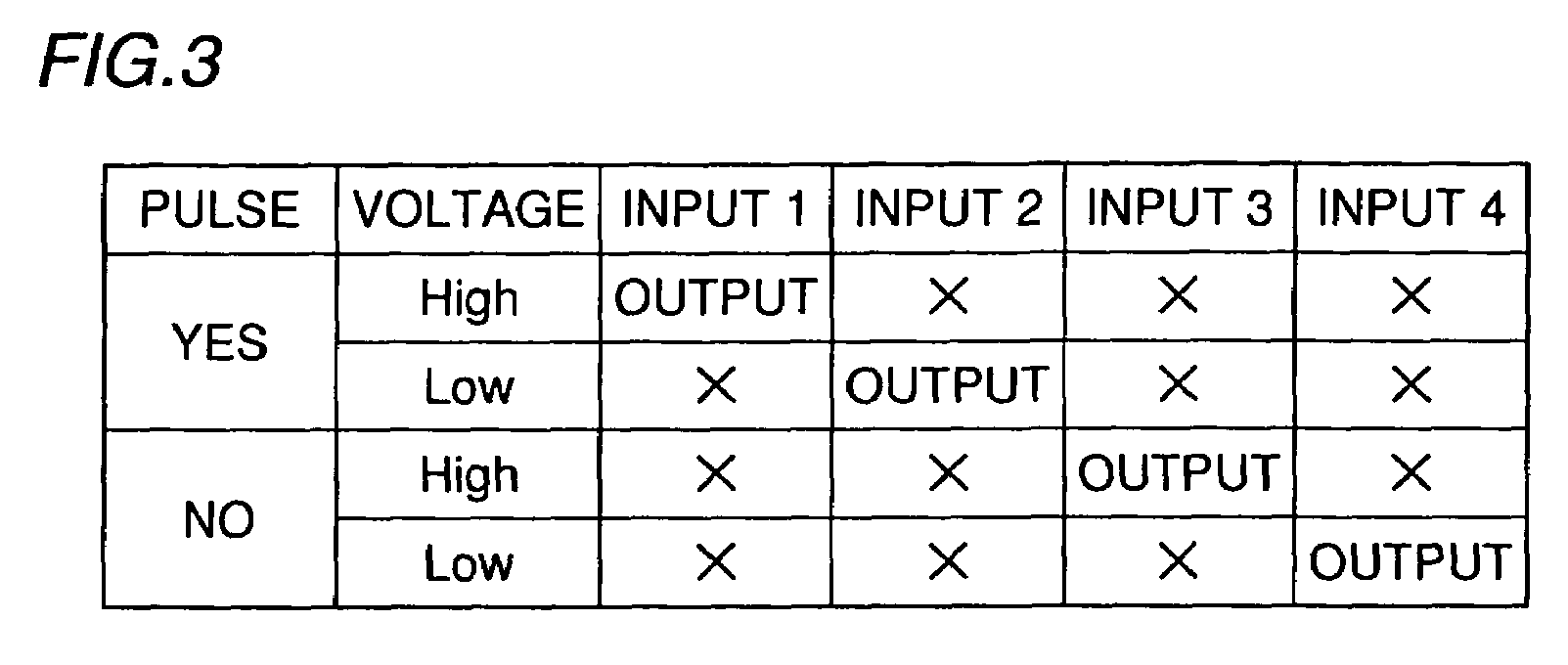Satellite broadcasting receiver receiving signal radio waves two broadcasting satellites
a satellite broadcasting receiver and receiver technology, applied in the field of satellite broadcasting receivers, can solve the problems of large power consumption, large power supply of the tuner unit for supplying electric power to the amplifier, and the improvement of the satellite broadcasting receiving system. to achieve the effect of reducing power consumption
- Summary
- Abstract
- Description
- Claims
- Application Information
AI Technical Summary
Benefits of technology
Problems solved by technology
Method used
Image
Examples
Embodiment Construction
[0050]Referring to FIG. 1, a satellite broadcasting receiver, i.e., an LNB according to the embodiment of the present invention, will be described.
[0051]The LNB shown in FIG. 1 basically has a structure similar to that of a conventional LNB 100 or 200 shown in FIG. 13.
[0052]More specifically, an output from LNA 81 is applied to a frequency converting circuit 80 (including an MMIC83 and an oscillator 84) through a BPF82, and converted to an intermediate frequency signal. The resulting intermediate frequency signal is transmitted to a tuner unit (not shown) from a terminal 87 through a capacitor C. Further, a power supply control circuit 85 is supplied with electric power and a control signal through terminal 87 and an inductor L from the tuner unit (not shown).
[0053]The LNB shown in FIG. 1 is the same as LNB 100 or 200 in FIG. 13, and therefore the overlapping portion will not be described. However, as will later be described, the structure of LNA 81 shown in FIG. 1 is significantly ...
PUM
 Login to View More
Login to View More Abstract
Description
Claims
Application Information
 Login to View More
Login to View More - R&D
- Intellectual Property
- Life Sciences
- Materials
- Tech Scout
- Unparalleled Data Quality
- Higher Quality Content
- 60% Fewer Hallucinations
Browse by: Latest US Patents, China's latest patents, Technical Efficacy Thesaurus, Application Domain, Technology Topic, Popular Technical Reports.
© 2025 PatSnap. All rights reserved.Legal|Privacy policy|Modern Slavery Act Transparency Statement|Sitemap|About US| Contact US: help@patsnap.com



